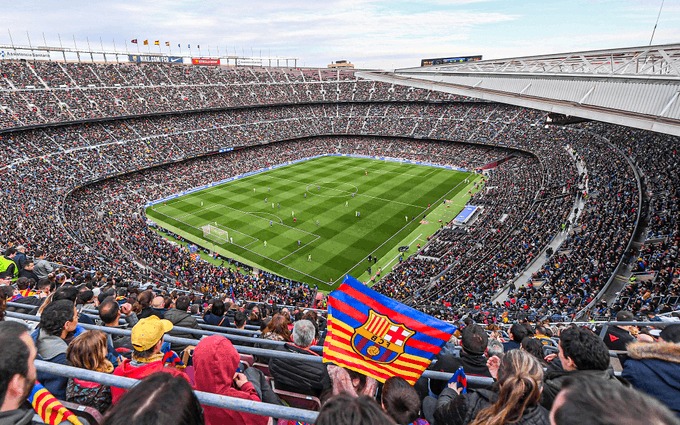Women’s football has soared from fringe competitions to a worldwide sporting giant, breaking attendance and viewing records in 2025. Competitions such as the National Women’s Soccer League (NWSL) of the United States and the UEFA Women’s Champions League in Europe are attracting unprecedented audiences, driven by emerging stars, shrewd investments, and cultural change fueled by social media. With the UEFA Women’s Euro 2025 in Switzerland (July 2–27) looming, the meteoric growth of the sport continues unabated. According to a report by Nielsen Sports and PepsiCo, women’s football is set to become one of the world’s top five sports by 2030, with a fan base of over 800 million, up from 38% today.
Record-Breaking Attendance and Viewership
The NWSL has established new marks, topping 2 million regular-season attendance in 2024, a first for the league, at an average of 11,500 fans per game. A milestone was reached on June 8, 2024, when 35,038 attended Wrigley Field to watch Chicago Red Stars vs. Bay FC, shattering the NWSL single-match attendance record. In Europe, the UEFA Women’s Champions League has had a 67% rise in games with more than 10,000 spectators, including Barcelona’s 2022 semi-final with Wolfsburg, which attracted a world-record 91,648 fans to Camp Nou. The 2023 FIFA Women’s World Cup, held in Australia and New Zealand, reached a viewership of more than 2 billion, doubling the 2019 numbers, while UEFA Women’s Euro 2022 final (England vs. Germany) delivered 87,192 spectators at Wembley and 17.4 million TV viewers in the UK alone. These figures indicate a seismic shift in supporter interest, powered by major tournaments and tactical utilization of larger stadiums.
Rising Stars Propelling the Boom
Rising stars are key to women’s football’s popularity. Barcelona’s Aitana Bonmatí, winner of the 2024 Ballon d’Or Féminin, and USWNT’s Sophia Smith, who hit 11 goals in the 2024 NWSL campaign, are fan favorites with their talent and charm. Bonmatí’s midfield play guided Barcelona to a second UEFA Women’s Champions League title in 2024, while Smith’s matches for Portland Thorns attracted record crowds. Tumblr entries by X underscore her marketability, citing her as the world’s number one female athlete in 2023. Young celebrities such as England’s Alessia Russo and Australia’s Sam Kerr also fuel interest, with Kerr’s 2023 World Cup semi-final drama for the Matildas attracting 11.15 million Australian viewers. These players, together with veterans such as Alex Morgan, whose last 2024 match had 26,516 fans turn out, are making women’s football a cultural behemoth.
The Drive for Equal Pay
The popularity surge has amplified the struggle for equal pay, an issue at the heart of women’s football. Despite record attendance, inequalities remain. In 2024, the NWSL’s historic collective bargaining agreement doubled minimum wages to $50,000 and abolished the draft, bringing player rights closer to those in men’s leagues. In Europe, UEFA’s higher Women’s Euro 2025 prize money (€16 million) bridges the men’s tournament gap but still sees leading stars like Bonmatí and Megan Rapinoe pressing for parity. Rapinoe’s 2023 campaign to get FIFA to offer equal World Cup prize money raised a $400 million difference between FIFA’s men’s and women’s tournaments. Progress is visible—England’s WSL clubs earned £48 million in 2022/23, up 50%—but commercial revenue, at 35% of overall income, highlights the necessity for additional sponsorship to bridge the pay gap.’
Social Media’s Cultural Impact
Social media has been a game-changer, fueling women’s football’s popularity. In 2022, the WSL’s TikTok engagement rate was twice as high as that of the MLS, with viral content from the likes of Sam Kerr and Chloe Kelly. The social impressions of the NWSL increased 94% in 2024 with retail purchases on NWSLShop.com increasing almost 300% on the back of campaigns with a focus. X posts, like @justwsports’ celebration of women’s football reaching an estimated 800 million fans by 2030, mirror the sport’s online strength. UEFA’s live YouTube broadcasts of Women’s Champions League games, with 3.6 million viewers for the 2022 final, have opened up access, while DAZN’s production quality has enhanced fan engagement. Hashtags such as #WEURO2025 and #NWSL trend worldwide, drawing in a diverse, woman-dominated fanbase (60% women, according to Nielsen).
Strategic Investments and Big Venues
The “Big Games” initiative—staging women’s games at historic arenas such as Emirates (Arsenal’s 60,000+ turnouts) and Camp Nou—has been driving turnout. The WSL’s 2023/24 season witnessed a 41% rise in attendance, while France’s D1 Féminine and Spain’s Liga F clocked 38% and 11% gains, respectively. The NWSL’s utilization of venues such as Snapdragon Stadium (San Diego Wave, 32,000 fans) and targeted marketing, such as Nike’s league-wide kit remake, have increased exposure. UEFA’s brand sponsorships with the likes of Visa, who in 2018 became the first women’s football sponsor, and Disney+’s 2025 broadcast contract of all 75 Champions League matches increase exposure even further.
Challenges and the Path to Sustainability
There are still challenges despite the boom. Post-tournament turnouts decline, as observed in the WSL’s 2022/23 season (6,636 to 5,222 attendees per match), emphasize the importance of continued support. Smaller clubs within Liga F and D1 Féminine face crowds of fewer than 1,000 fans, emphasizing uneven expansion. Equal pay deficits and tight sponsorship funds—women’s football has a fraction of world sports investments—remain. But efforts such as the WSL’s £20 million Premier League loan to NewCo and developments, including Brighton’s women’s stadium, are a guarantee of long-term development.
The Future: UEFA Women’s Euro 2025 and Beyond
The next UEFA Women’s Euro 2025 in Switzerland, with 700,000 tickets to be sold across eight stadiums, is set to shatter more records. The competition’s legacy initiative, centered on gender equality and participation at a grassroots level, has the ambition to turn casual fans into lifelong supporters. As global watch figures are expected to reach 800 million by 2030, women’s football will be likely to be a serious challenge to sports such as Formula One and tennis. Expenditure on broadcasting, player wellbeing, and supporter experiences will make this boom a sustainable legacy.







